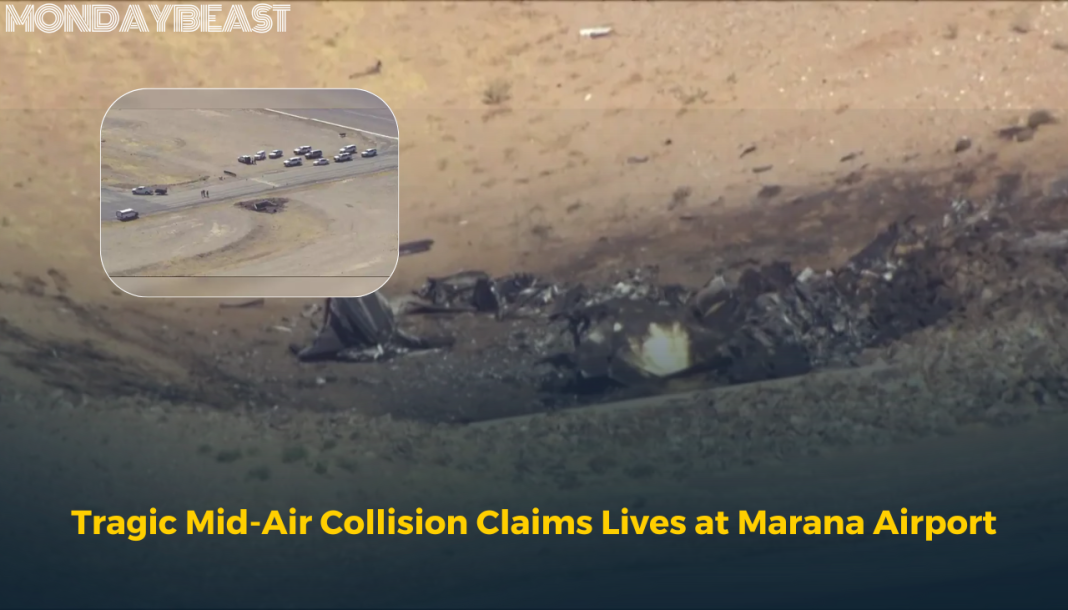The Incident Overview
Two people tragically died in a plane crash on February 19 at the Marana Regional Airport, near Tucson, Arizona. A mid-air collision occurred between two small aircraft: a Lancair and a Cessna 172. This incident has raised questions about safety at uncontrolled airports. According to Marana Police, both planes were smaller fixed-wing, single-engine models. The crash happened shortly before 8:30 a.m. Each aircraft carried two persons, leaving an air of uncertainty and sorrow surrounding their identities.
Understanding the Aircraft
The Lancair and Cessna 172 are vastly different in performance and purpose. Aviation expert Reed Yadon likened the Lancair to a Lamborghini, a powerful, speedy aircraft. In contrast, he described the Cessna as akin to a family car—slow and steady. The Cessna 172 commonly trains new pilots, making it a familiar sight in the skies. Yet, the Lancair challenges this norm with its speed. It flies over 200 miles per hour, making it essential for experienced pilots. Unless they log sufficient flight time, obtaining insurance for the Lancair can be tricky. This discrepancy can have dire consequences if proper precautions are not taken.
The Collision Factors
The Federal Aviation Administration (FAA) states the crash happened while the Cessna was attempting to land. This context highlights the importance of communication in the air. At uncontrolled airports, such as Marana, pilots announce their intentions over a shared frequency. Yet, the responsibility lies solely with the Pilot-in-Command to maintain safe distances. Many overlook this detail, which can lead to severe consequences. What if the pilots did not hear each other? It beckons the question—how often do we underestimate the noise and chaos of the skies?
Uncontrolled Airports and Safety
Marana Regional Airport operates as an uncontrolled field. This means it lacks an air traffic control tower, relying instead on pilots’ self-management. In bustling airports, the control tower directs aircraft, reducing the likelihood of mishaps. However, the absence of such oversight at uncontrolled fields can elevate risks significantly. This incident is sad but not isolated. Arizona has seen its share of plane crashes recently. Just last week, a private jet accident claimed one pilot’s life, sparking concerns about air safety in the state.
The Aftermath and Investigation
Although the victims’ identities remain undisclosed, the gravity of their loss weighs heavily. The National Transportation Safety Board plans to investigate the collision. They will likely assess communications, weather conditions, and pilot actions. All these elements feed into a larger narrative about aviation safety. As news of this devastating collision spreads, it forces us to confront our aviation regulations. Can safety measures be strengthened at uncontrolled airports? The emotional toll of unforeseen accidents might spark the discussions necessary to promote change.
Seeking Answers and Reflection
In light of such a tragic incident, we must reflect. Have we become complacent in our understanding of air travel? With so many people taking to the skies, is enough being done to ensure safety? The emotional impact reached beyond the victims and their families. Aviation incidents reverberate, tugging at our collective consciousness. How can we preserve safety while we chase dreams in the vast azure of the sky? With each takeoff and landing, we gamble on the assurance provided by aviation standards. The loss of lives amplifies those concerns. We may never completely eliminate risks, but we must always strive for improvements in safety and training.




